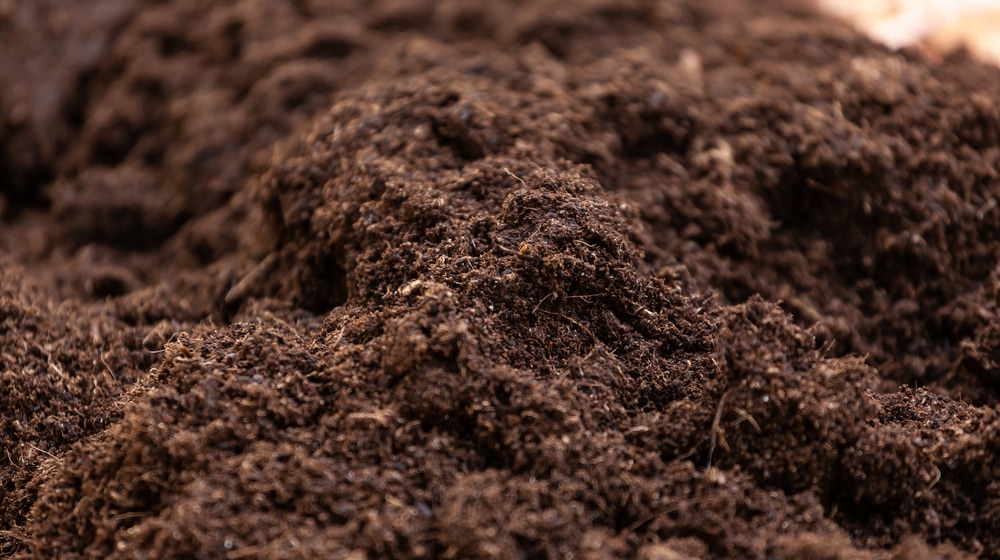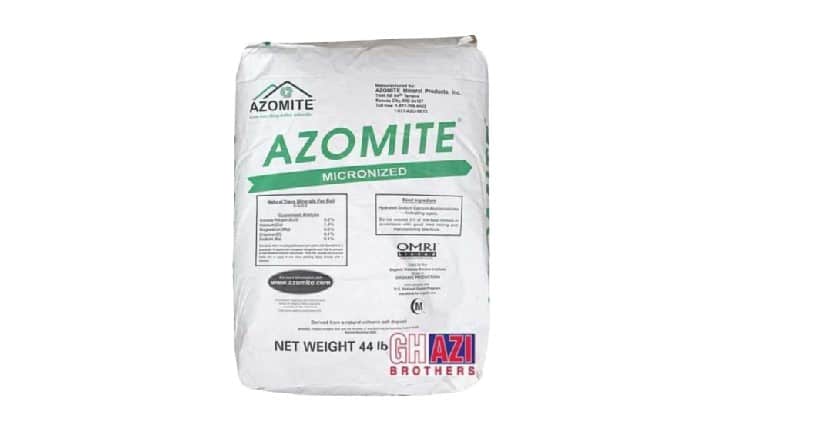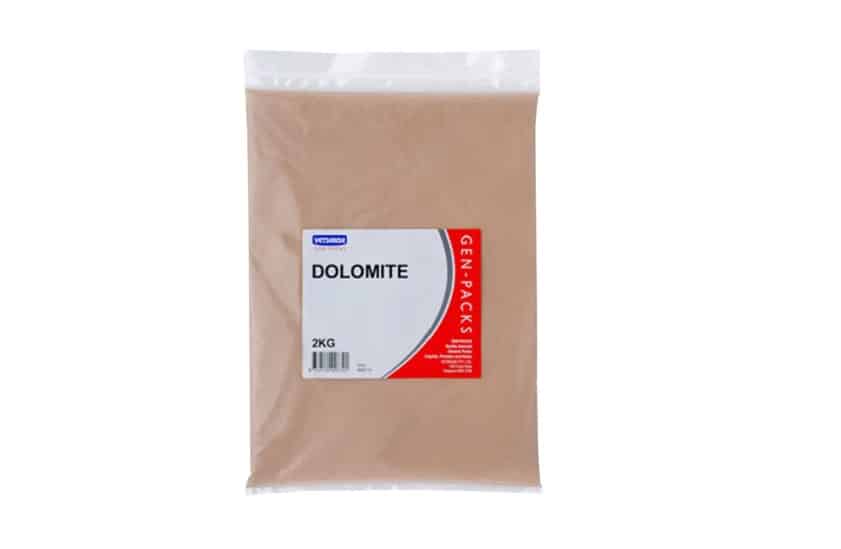
Rock dust, also commonly referred to as rock powder, or mineral fines is made up of crushed rocks that are processed through any mechanical or natural process. These contain different minerals or trace elements which can then be used in a wide range of farming applications.
From the different options of rock dust that you can choose from, we see many gardeners often end up comparing Azomite vs dolomite.
If you are also having a hard time comparing the two against each other, then we highly suggest you keep on reading! Here are all the things that you will need to know about both of them:
Azomite vs Dolomite: Mineral Comparison
| Specifics | Azomite | Dolomite |
| Intended Use | Mineralize Soil | Buffering Agent |
| Impact On Soil | Substantial | Slightly Less |
| Quantity Required | Minimal | Loads |
| Action | Slow Release | Slow Release |
While you will find a ton of gardeners saying that there are no significant differences between Azomite and Dolomite, that is not actually true. You will find many differences in the basic composition and the benefit that they provide to the soil.
The general rule of thumb here is that the Azomite mixture will always reign above when compared side by side with Dolomite as it is more robust and offers better nutrient composition.
On the other side of things, the Dolomite mixture is only intended for regulating pH.
If the pH of your soil is low and you want to raise it by one point (say from 5 to 6), then you will be better off relying on dolomite for help.
Assuming that the nutritional content in your soil is optimal, there is no need to go over your budget to add Azomite.
On the other side of things, if you’ve been harvesting the soil for a few years now and need something robust to help maintain the integrity of the soil, then the only thing that you can do is to rely on Azomite.
Everything will boil down to the current condition of the soil and you can’t make the decision by yourself.
In some situations, you will not have to add more than 20 pounds of Azomite per 10,000 sq ft. of soil. However, this estimate can vary depending upon many factors and you might need to bump up the quantity to 30 pounds.
When compared with the dolomite for increasing the pH, you will have to first calculate the pH and then use this calculation to add dolomite to the soil.
In some situations gardeners have to add five times as much dolomite to the soil when compared with the azomite.
The general sentiment on the market is that azomite is gold dust, while dolomite is plain limestone that increases the Ca and Mg content. So, you will find that almost all the gardeners will prefer to go with azomite to increase the consistency and quality of your soil.
If you’re unsure about how to check the soil, then we will suggest that you involve an expert here.
There is no need to test everything on your end alone and then get stuck. Instead, you need to focus more on involving the experts and have them help you out.
A bit of input from the local veterans that have been gardening for a while will put you in a much better spot.
So, when you’re stuck or can’t seem to figure out the situation on your end, just ask for help. That way, you will be able to make the best decision for your farm.
Azomite:
Azomite is a common choice for gardeners to go for, especially when they need to supply trace minerals. For those of you unaware of what Azomite basically is, it is a naturally mined product obtained from volcanic ashes in Utah, USA.
These rock dust have a fair amount of silica (around 65%), though not the same which you can find in the sand. They are great for reviving trees that are suffering or are on the brink of dying out.
Some other added benefits of using Azomite are that they are completely organic, and can be used in a wide variety of field crops.
That being said, not only are these rock dust really versatile, but you can use them to help wake up microbes found in the soil or mineralize soils that have depleted.
Dolomite:
Dolomite is a type of limestone that makes up around 2% of the Earth’s crust. The mineral is composed mainly of calcium magnesium carbonate. It is used as the main component inside certain sedimentary rocks, better known as dolostones.
Due to the mineral’s reaction with acid, it can be used in plenty of different scenarios.
This includes using the rock as a soil conditioner. However, there are only certain use cases for dolomite in soil, as it is also used in many other applications, including construction and the chemical industry.
When you can’t seem to figure out the right fit for your soil, you can simply check the pH.
If the nutrient content is good and you just need something to help with the pH, then going with Dolomite over Azomite is the better idea. So, have that in mind when you’re stuck or confused.
Are They Different?
In case you were wondering whether the two are even different in application, then yes, they are completely different.
While Azomite is usually gathered through volcanic ash and is a type of rock dust containing trace minerals, dolomite is a limestone.
The chemical properties of both Azomite and dolomite are also different from each other.
Can They Be Interchanged With Each Other?
As both can be used on the soil, a common question asked regarding Azomite and dolomites is whether they can be interchanged.
While it may look like you can use either on the soil, what you need to understand is that both of them have completely different use cases.
Azomite is best used when you need to mineralize soil that has been heavily farmed or depleted. It should help in giving the soil the required trace minerals.
That being said, dolomite helps in giving the soil the needed Ca and Mg.
Apart from that, it should help in buffering your soil whenever you notice ph fluctuation. Also, dolomite is known to sweeten the soil.
So, in case you were wondering how to interchange the minerals, then you shouldn’t.
Which One Should You Use?
Regarding which rock dust or mineral should you use on your soil, it simply depends on the condition of your soil.
You will need to determine what your soil needs by closely inspecting the soil. The point of using rock dust is to give the soil the trace minerals or components that they are currently lacking.
So, only after you have determined what your soil requires, is when you should start to proceed on to the next step.
If you’re not that confident in your skills and need more perspective on the situation, then don’t hesitate to ask the experts. Otherwise, you will just be wasting your budget and time without getting anything out in return.
All of your focus should be on checking the requirements and the nutrient deficiency of the soil. Ignoring this step will leave you in the dark as you struggle to secure a good enough response from the soil.
Blindly adding in more nutrients and chemicals to the soil won’t yield any results.
You have to look at every aspect and ask for guidance when you’re confused. You don’t have to test out everything on your own, and relying on the experience held by other professionals will be better for you.
So, keep that in mind when you’re trying to figure out the right fit.
Comparing Azomite vs Dolomite, both are completely different components having different use cases. Though both are used in your soil, you should first determine the condition of the soil.
At the same time, you should learn the use cases of both Azomite and Dolomite before deciding which your soil is in need of.
The Takeaway
These are some differences that you need to consider when you can’t seem to decide between Azomite and Dolomite. Both of these can be used to increase the output from your soil, but you need to first understand the nutrient deficiency in the soil.
Most of the time, you gotta use Dolomite to help you with the pH regulation. It will help you maintain the basic consistency of your soil, and you will not have to bother with more issues when it comes to the gardening soil.
Similarly, Azomite brings a wide range of micronutrients that are essential for soil with poor nutrient content. A small amount of Azomite each season can be the differentiator between a massive and an underwhelming yield.
Still, you can’t make the decision recklessly when it comes to choosing the right type of material for your soil.
Otherwise, you will just be holding yourself back and the response from the plants will be underwhelming to say the least.



